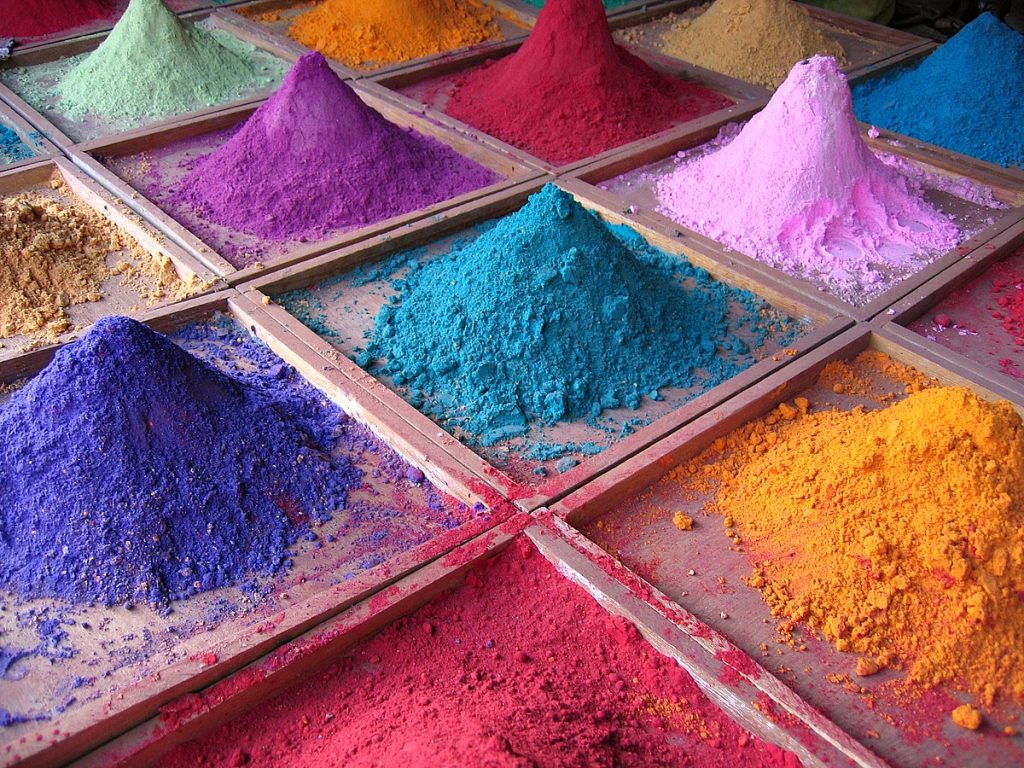Pigment powder ultrafine crushing equipment

Particle size is one of the important indicators of pigments. Generally, pigment particles are required to have stable physical form, uniform particle size, and good dispersion, without agglomeration or precipitation.
Iron oxide pigment is a pigment with good dispersion, excellent light resistance and weather resistance. It mainly refers to the four types of iron oxide red, iron yellow, iron black and iron brown coloring pigments based on iron oxides. Among them, iron oxide red is the main one.
Precipitated (wet) iron oxide pigments are very fine, but during the filtration and drying processes, due to factors such as van der Waals forces, hydrogen bonds, charges, etc., the micro-aggregates aggregate into large aggregates and cannot be directly used in high-end coatings. For coloring, ultrafine crushing is necessary. Jet milling uses the energy of high-speed airflow or superheated steam to ultrafinely grind solid materials. It is one of the most commonly used ultrafine grinding methods.
At present, in the pigment production industry, the application range of airflow crushing is becoming more and more extensive, which mainly comes from the following two factors:
First, the safety of mechanical crushing is poor, because if hard metal falls on the high-speed rotating mechanical teeth, it is easy to produce an open flame, which is very dangerous in a dusty pigment production workshop, but airflow crushing does not have this question;
Second, airflow crushing belongs to ultra-fine crushing. In the production of some special pigments, the fineness of the pigments is required to be higher.
1. Iron oxide pigment
During the filtration and drying process of iron oxide pigments, due to van der Waals forces, hydrogen bonds, charges and other factors, micro-aggregates aggregate into large aggregates, which cannot be deaggregated through general mechanical action. Using a fluidized bed or disc-type jet mill to process iron oxide pigments, the Hagermann fineness can reach: iron oxide red 5.5 to 7.0, the darker the color, the better the fineness; iron oxide yellow 7.5; iron oxide black 7.0 .
After ultra-fine crushing, the iron oxide pigment is depolymerized from large aggregates into small aggregates. When producing paint, it only takes a short time of high-speed stirring process to achieve the required fineness, thereby saving costs and the small size of the pigment. The aggregates are difficult to coarsen into large aggregates, thus ensuring the quality of the paint.
2. Black high temperature resistant manganese ferrite pigment
The fine particles of manganese ferrite pigment that have been surface-coated, surface-modified, dried, and pulverized are flocculated again into coarse particles of varying degrees, and cannot effectively exert the pigment properties of manganese ferrite.
After deep processing and grinding using a fluidized bed or disc-type jet mill, the Hagermann fineness of the manganese ferrite pigment is approximately 7 to 7.5. It has good dispersion and can give full play to its optical and pigment properties.
3. Brown ceramic pigment
The brown ceramic pigment is ultrafinely pulverized using a flat jet mill. When the air pressure is 7.5×105Pa and the feeding speed is 100kg/h, the product d50 is 4.55μm and the maximum particle size is 9.64μm.
At present, common ultra-fine grinding equipment includes jet mill, mechanical impact ultra-fine grinder, stirring ball mill, sand mill, vibration mill, colloid mill, high-pressure jet grinder, planetary ball mill, pressure roller mill, and ring roller mill. etc.
